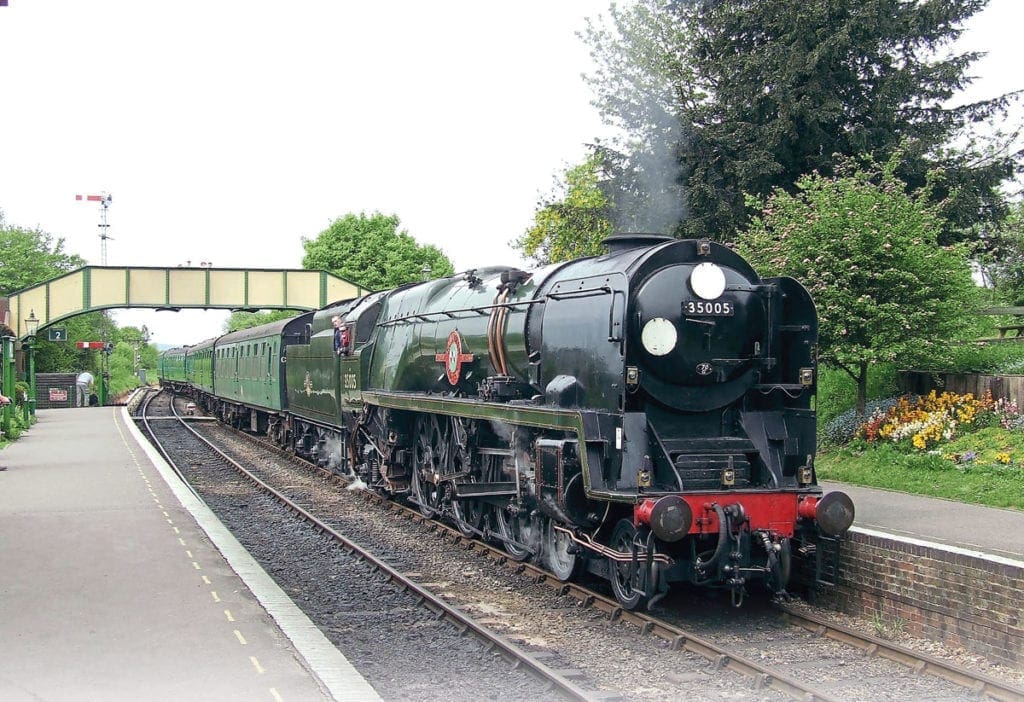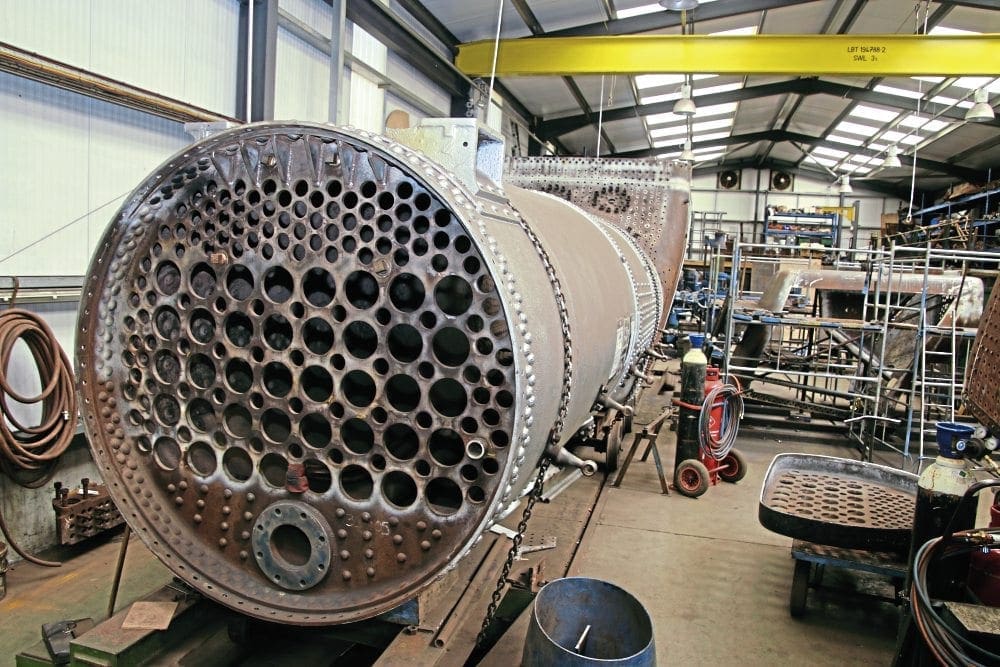
Canadian Pacific is now the oldest survivor of the Merchant Navy class. Built in 1941 at Eastleigh Works, the locomotive entered service on January 13, 1942.
During its time on the Southern Railway, it was numbered 21C5. Renumbered 35005 upon Nationalisation, between March 1948 and April 1951 it was fitted with a Berkeley mechanical stoker. The system proved unreliable in everyday service, earning the 4-6-2 the nickname ‘Canadian Pathetic’ from crews.
In 1952, No. 35005 became one of the locomotives that took part in trials at Rugby’s static test facility.
Although excellent performers, the Merchant Navy Class had numerous mechanical issues that necessitated a major rebuilding programme. In May 1959, No. 35005 returned to Eastleigh Works for its rebuild, which involved reverting many of the more novel features to those of more standard practice. The most noticeable visual change was the removing of the ‘Spam Can’ casing, resulting in a more conventional outline.
Withdrawn from Weymouth shed in 1965, it was sold to Woodham Bros in Barry in 1966. Rescued from the famous scrapyard in March 1973, it moved to the former Steamtown Museum at Carnforth, where its restoration began.
Berkeley mechanical stoker system proved unreliable and earning the 4-6-2 the nickname ‘Canadian Pathetic’.
In 1989, No. 35005 was sold to Andrew Naish, who took it to the Great Central Railway, where it steamed in November 1990.
While visiting the Mid-Hants in 1996, Andrew repainted Canadian Pacific into the short-lived BR express passenger blue livery, which the class never carried in the rebuilt form. It carried this livery when it returned to the main line in 1998, operating out of Tyseley Locomotive Works, from where it hauled the summer Sunday ‘Shakespeare Express’.
In January 2001, Marcus Robertson, founder of Steam Dreams, bought No. 35005, repainted it into BR green and it became a mainstay of the tour operator’s ‘Cathedrals Express’ excursions.
The boiler incident

However, on October 19, 2002 during a ‘Cathedrals Express’ from London to Canterbury, the Pacific made an unscheduled stop at Paddock Wood station as a signalman reported an oil leak from one of the coaches. While there, one of the small tubes near the firebox crown burst, immediately filling the cab with steam. The crew were unharmed but, unfortunately, Richard Bowker, from the Strategic Rail Authority, was scalded in the incident.
This led to the withdrawal of Canadian Pacific for 2½ years while it was repaired. The incident resulted in No. 35005 being confined to heritage railway operation, mainly based at the MHR.
In 2006, with the boiler certificate nearing its end and the forthcoming cost of overhauling it back to working order, Canadian Pacific was sold to the MHR for £300,000.


